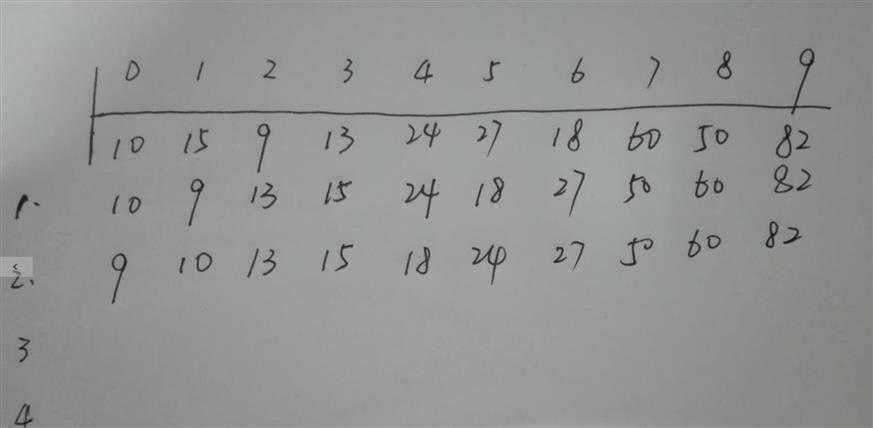标签:
一、前言
主要讲述冒泡法排序和快速排序的基本流程,并给出代码实现,亲测可用。
二、冒泡法排序
冒泡法排序主要是将相邻两个值比较,把小的向前冒泡,大的向后沉淀,时间复杂度为O(n2)。主要思想如下:
分为内外循环,每次外循环确定一个大的数据的具体位置,如下实例:

从图中可以看出,进过两次外循环就可以得到排序结果,随后的8次循环都浪费了,为了避免这种情况,我们可以设置一个状态参数,用来表示内循环是否发生数据的交换,从而作为外循环是否退出的信号。
三、快速排序
快速排序是最有效的排序方法之一,其主要思想是对数据进行分开排序,通过选择一个基数,然后将所要排序的数据分成两部分,一边全大,一边全小。然后利用递归的思想对分开的数据继续排序。

四、代码实现
冒泡法排序(输出排序后数据在原数据中的位置):
1 void SparseGraphic::BubbleSort(const cv::Mat inMat, QVector<int> &index, cv::Mat &outMat) 2 { 3 if(inMat.rows!= 1) 4 return; 5 int col = inMat.cols; 6 index = QVector<int>(col); 7 for(int i = 0;i<col;i++) 8 { 9 index[i] = i; 10 } 11 if(inMat.type()!= CV_32F) 12 inMat.convertTo(inMat,CV_32F); 13 outMat = inMat.clone(); 14 15 float *ptr = outMat.ptr<float>(0); 16 float tmpVal; 17 int tmpIdx; 18 for(int i = 0;i<col;i++) 19 { 20 for(int j = 0;j<col - i -1;j++) 21 { 22 if(ptr[j]>ptr[j+1]) 23 { 24 tmpVal = ptr[j]; 25 ptr[j]=ptr[j+1]; 26 ptr[j+1]=tmpVal; 27 tmpIdx = index[j]; 28 index[j] = index[j+1]; 29 index[j+1] = tmpIdx; 30 } 31 } 32 } 33 }
快速排序(输出排序后数据在源数据中的位置):
1 void SparseGraphic::QuickSort(cv::Mat inMat, QVector<int> &index, int low,int high) 2 { 3 if(inMat.rows!=1) 4 return; 5 float *ptr = inMat.ptr<float>(0); 6 if(low < high) 7 { 8 int i = low,j = high; 9 float X = ptr[low]; 10 while(i<j) 11 { 12 while(i<j && ptr[j] >= X) 13 j--; 14 if(i<j) 15 { 16 ptr[i++] = ptr[j]; 17 int tmp = index[j]; 18 index[j] = index[i-1]; 19 index[i-1] = tmp; 20 } 21 22 while(i<j && ptr[i] < X) 23 i++; 24 if(i<j) 25 { 26 ptr[j--] = ptr[i]; 27 int tmp = index[i]; 28 index[i] = index[j+1]; 29 index[j+1] = tmp; 30 } 31 } 32 ptr[i] = X; 33 QuickSort(inMat,index,low,i-1); 34 QuickSort(inMat,index,i+1,high); 35 } 36 }
标签:
原文地址:http://www.cnblogs.com/zyore2013/p/4776813.html